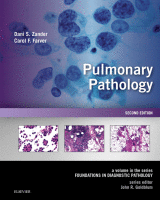Physical Address
304 North Cardinal St.
Dorchester Center, MA 02124

Introduction Idiopathic interstitial pneumonias comprise a number of relatively uncommon clinicopathologic entities, which can be distinguished from one another and from other forms of diffuse interstitial lung disease by their clinical, radiologic, and histologic features. The basic approach to diagnosing…

Introduction The unusual bacterial pneumonias described in this chapter are caused by agents that are phylogenetically diverse and reside in a wide variety of locations, ranging from extracellular Mycoplasma attached to respiratory epithelium to obligately intracellular organisms. The obligately intracellular…

Introduction Parasitic infections remain an important cause of pulmonary disease throughout the world, although less frequently encountered in resource-rich countries. The most common protozoal parasite–associated lung diseases throughout the world are caused by Plasmodium falciparum (falciparum malaria) and Toxoplasma gondii…

Introduction Influenza viruses remain the most frequently identified causes of viral infection in the lung, and respiratory syncytial virus (RSV) remains a major cause of severe pneumonia in children worldwide and is an increasingly recognized cause of illness in adults…

Introduction Fungi are unicellular or multicellular organisms that have chitinous cell walls and reproduce asexually, sexually, or both ways. Fungal cells are larger and more complex than bacteria, with cell walls containing polysaccharides, proteins, and sugars. Pulmonary fungal infections typically…

Tuberculosis Tuberculosis—Fact Sheet Definition ▪ Infection caused by MTB Incidence and Location ▪ About one-third of people throughout the world are infected with MTB ▪ Tuberculous disease develops in approximately 10% of infected individuals ▪ Infection is most commonly diagnosed…

Introduction Bacterial infections in the lung can be classified in many different ways, that is, pathogenesis, epidemiology, anatomic distribution (lobar or bronchopneumonia), time course, or etiologic agent. In practice, a combination of these approaches is needed to classify bacterial pneumonias.…

Introduction The term acute lung injury pattern was originally proposed by Katzenstein to encompass the histologic entities of diffuse alveolar damage (DAD) and the entity previously referred to as bronchiolitis obliterans with organizing pneumonia (BOOP), now known as organizing pneumonia…

Introduction The diagnosis and classification of pulmonary vasculitis is a challenging topic because pulmonary vasculitides represent pulmonary manifestations of systemic diseases. Extrapulmonary involvement is, in some cases, a significant source of morbidity and mortality. To further complicate matters, there is…

Introduction Pulmonary vascular diseases encompass a wide range of disorders of the lung. Abnormalities of the pulmonary vasculature not only cause lung disease, but can also result from secondary involvement by nonvascular pulmonary diseases. Many of the primary vascular diseases…